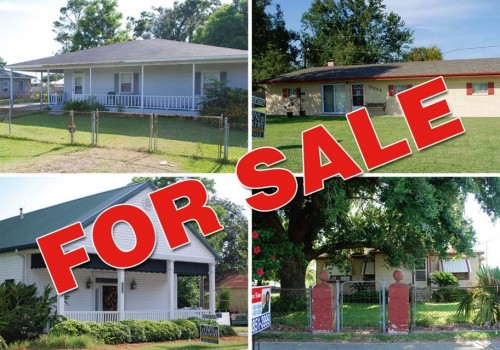
Theotine "Theo" Ulysse Dardar
June 23, 2009
Diana Benoit Toms
June 25, 2009Home prices nationally continue to decline, but prices in the Houma-Thibodaux area are rising slightly, according to data provided by the California-based real estate tracking firm First American CoreLogic.
Foreclosure rates in the area have declined as well, but mortgage delinquency is up, according to the statistics.
The average cost of a home has decreased 22.3 percent in the country since reaching a peak in July 2006, but home prices in the Houma-Thibodaux area increased .45 percent in March 2009 from the same month the year before.
In February, local home prices increased .66 percent from the year before.
“Louisiana has seen stable and even slightly-increasing home prices recently, in large part because of the stable economy and oil industry, though they have been deteriorating lately,” said Sam Khater, senior economist with First American CoreLogic. “There has also been a slightly lower share of exotic mortgages.”
Exotic mortgages are subprime and Alt-A loans combined, though the latter is weighted more heavily. Alt-A loans are less risky than subprime loans, falling between prime and subprime.
Khater attributes the falling foreclosure rates in the area to the smaller number of exotic mortgages, along with steady home prices and the strong job market.
Though the foreclosure rate in Houma-Thibodaux remained the same in March from the year before, the rate in April decreased to .76 percent in April 2009 from April 2008’s .81 percent, according to First American Corelogic’s data.
The national foreclosure rate was 1.8 percent in April 2009.
Synde Devillier, president of the Bayou Board of Realtors in Houma, said the area’s low unemployment contributes to steady home prices.
“People are moving into the area to fill jobs. We’re not sustaining layoffs,” she said. “We’re in our own little bubble…We’re blessed to have jobs here.”
Home prices in some parts of the parish are declining, Devillier said, mainly in the southern part which is more vulnerable to flooding.
A few seasons without storms would bring prices up again, though.
The foreclosures that do occur in the area, she said, are generally caused by issues like divorce and gambling problems.
However, the Houma area is hurt by a lack of affordable housing. Four or five men will rent a property, but will not bring their families, Devillier said.
Credit in the mortgage industry is tighter too, but the federal government has recently offered an $8,000 tax credit for first-time homebuyers that has helped sales, she said.
Devillier said Realtors want the credit expanded to include people not buying their first homes.
Ron Brooks with Patterson Real Estate in Houma said 19 homes in Terrebonne underwent foreclosure in May, the same number as in April.
“That’s not a big number for Houma-Terrebonne,” he said.
Brooks’ data shows a slight increase in foreclosure rates this year, however.
His data also reveals that property in Houma is undervalued. The prevalence of marsh in Terrebonne should boost the price of available land, though the perception of people buying homes in the area is that property is overvalued.
Terrebonne President Michel Claudet credited the parish’s strong economy and low unemployment for the area’s rise in home prices. He reported that the parish had $71 million in residential construction and $178 million in commercial construction last year.
Houma real estate developer S.P. LaRussa has blamed excessive regulation for strangling development of new subdivisions in Terrebonne, boosting property sales in neighboring Lafourche Parish. Like Devillier, he is concerned about the lack of affordable housing in Houma, pointing to fully occupied apartment complexes.
“How many new subdivisions are there in Houma when people want to move here?” he said.
LaRussa also feels that credit has been tight because lenders fear the market could start looking like the rest of the U.S.
CoreLogic’s data shows 3.2 percent of mortgages locally were 90 days or more late in April 2009, an increase of .85 percent from April 2008.
The nationwide rate rose 1.2 percent over the same period.
Khater said the area’s figures reflect distress in the state economy.
“While overall unemployment is still low relative to the U.S., it’s rapidly climbing in Louisiana, rising more than one percentage point between January 2009 and April 2009,” he said.
Claudet, a director of Houma-based Synergy Bank, said the increasing delinquency rate has more to do with long-term financing in secondary mortgage markets than with the lending practices of local banks.
LaRussa said the current mortgage delinquency rates are small compared to the era of high interest rates locally in the 1980s and are nothing when matched against what is happening now in Florida, Nevada and Arizona.
“As long as oil prices go up, there’s more drilling and (abundant) retail, people are not going to New Orleans, Baton Rouge and Lafayette,” LaRussa said. “The traffic is killing them. They’ll come to Houma to shop.”
Additionally, the amount of Real Estate Owned (REO), property owned by lenders following foreclosures, declined .05 percent from April 2008 to April 2009.
The rate decreased .10 percent from March 2008 to March 2009.
“Our economy is strong,” Claudet said. “I hope it will continue.”














